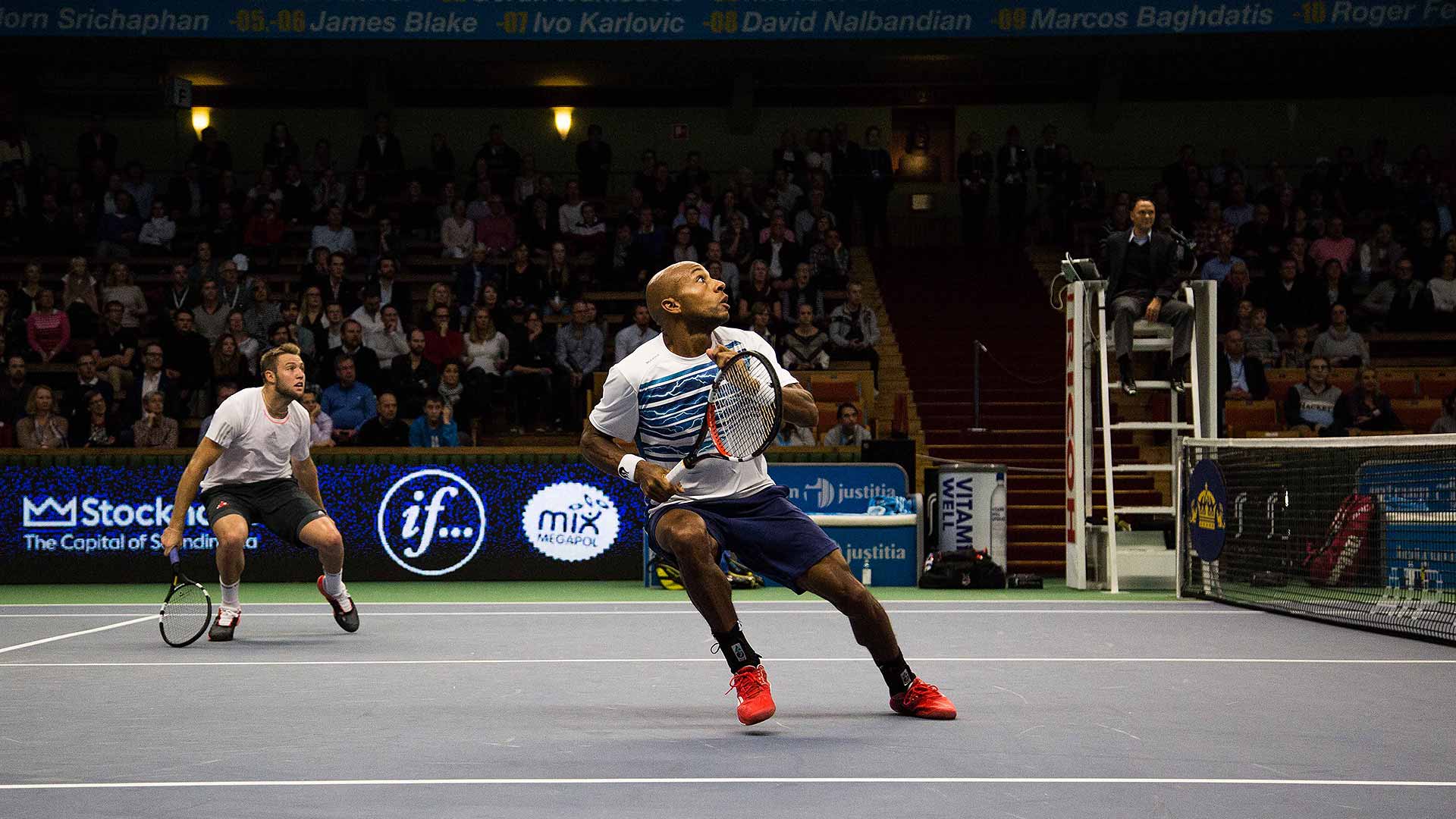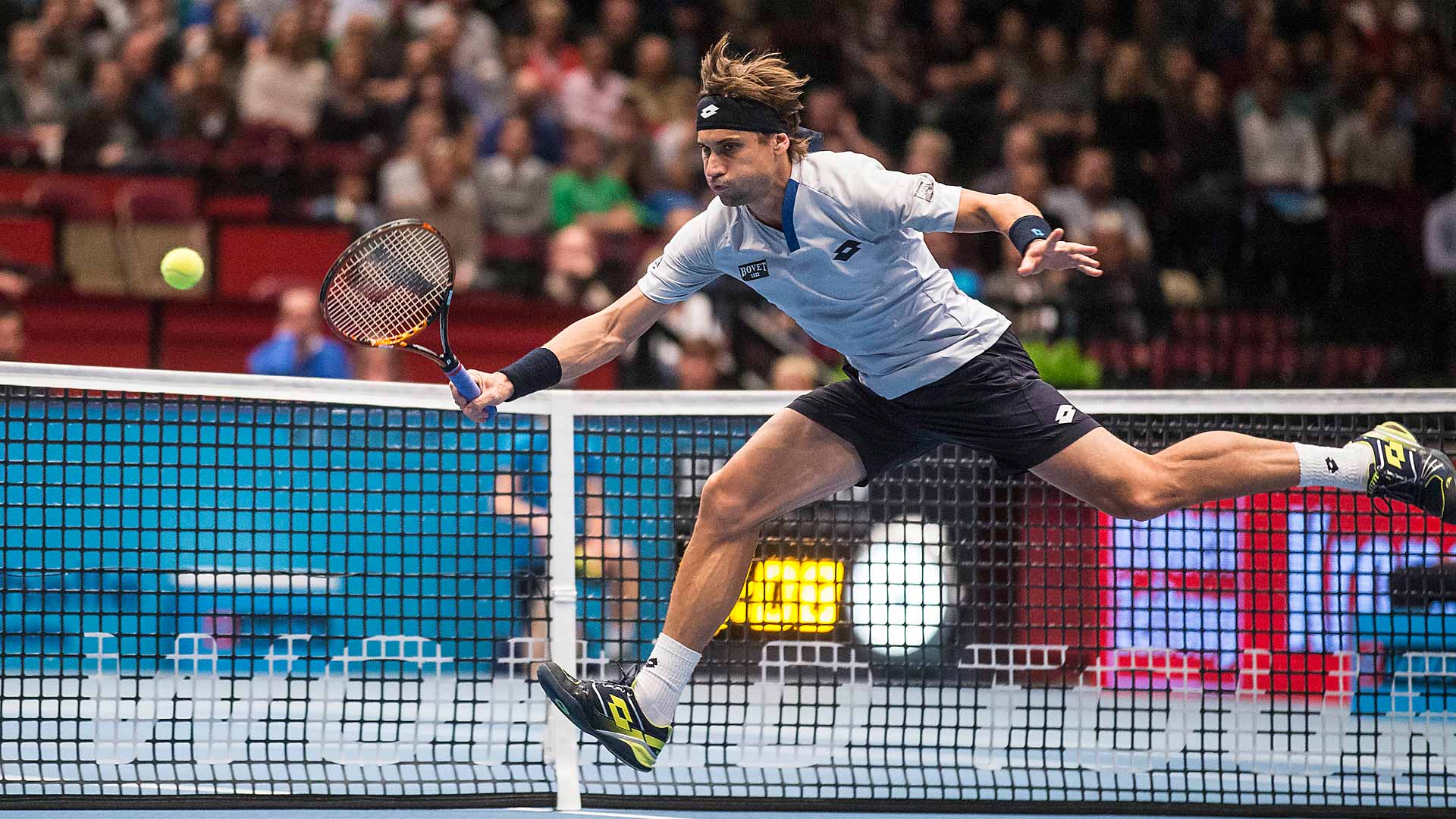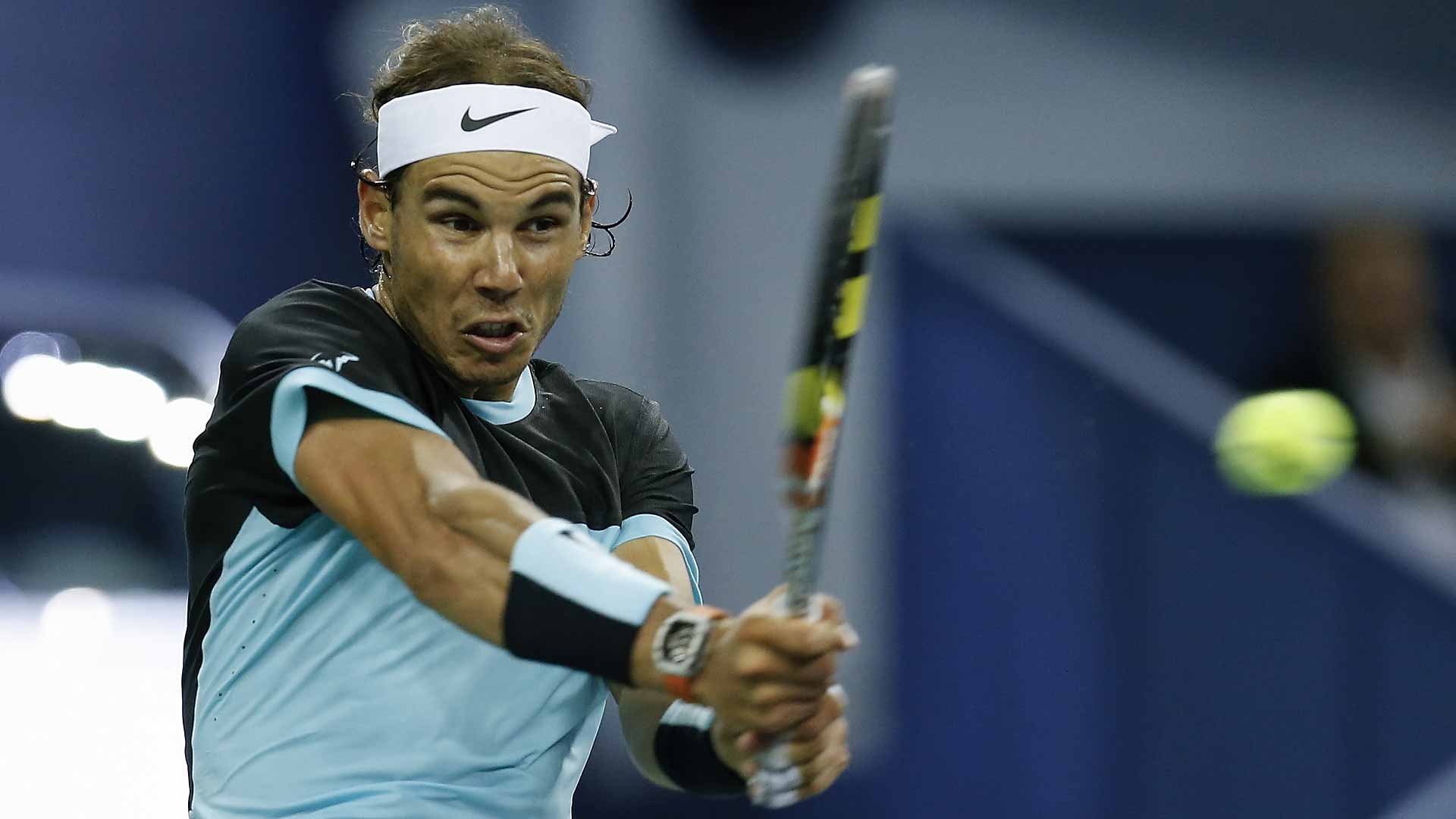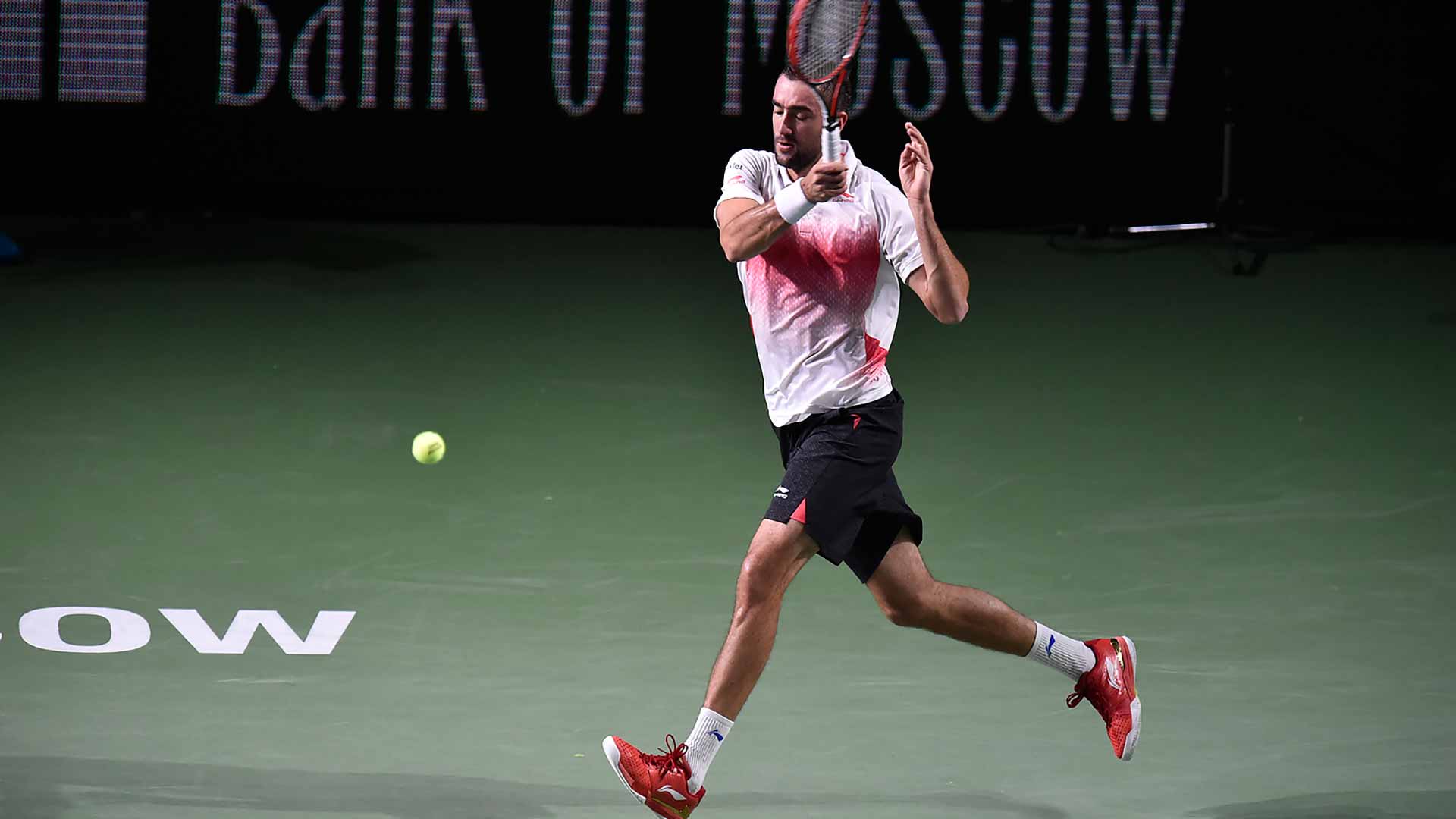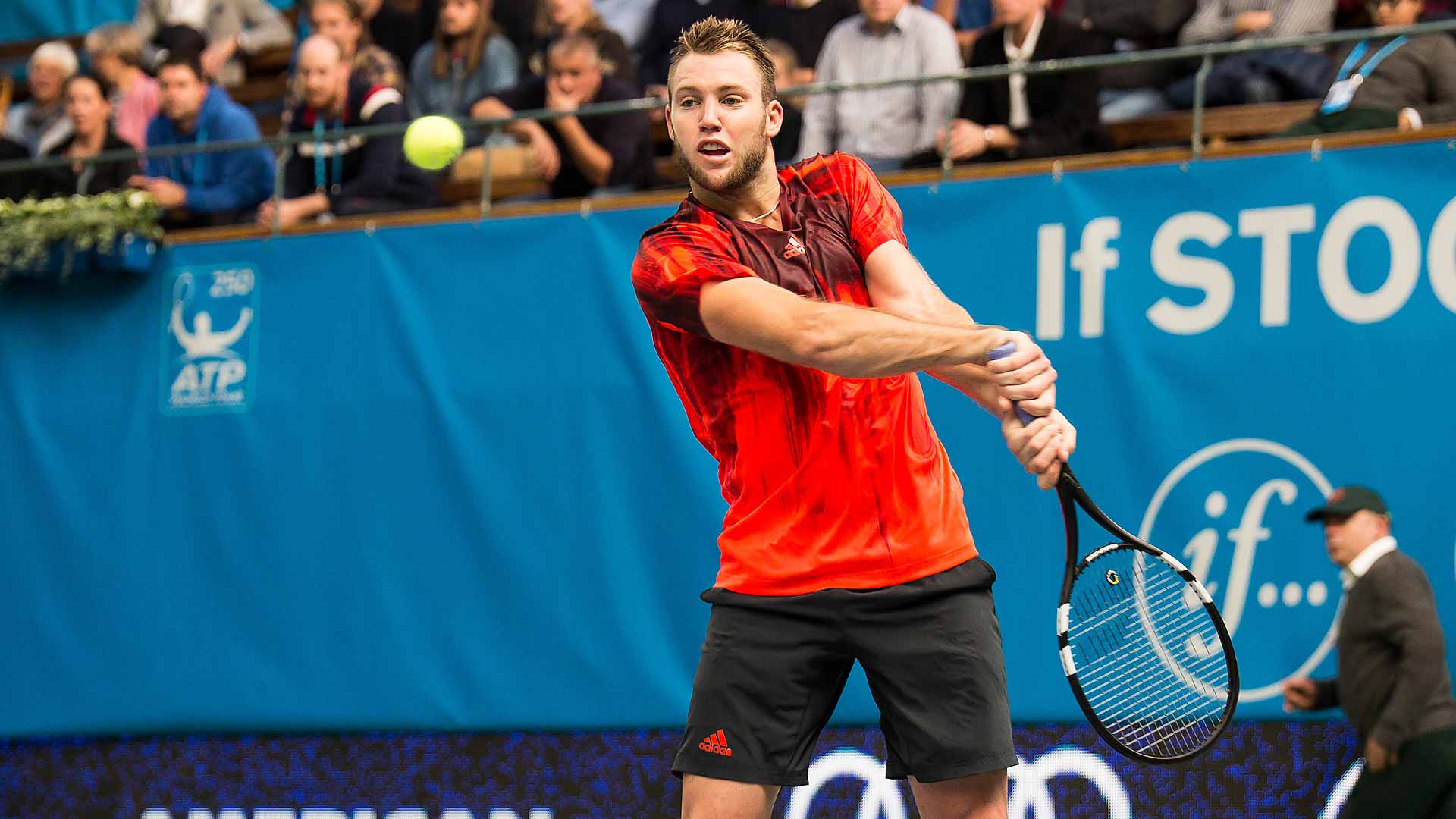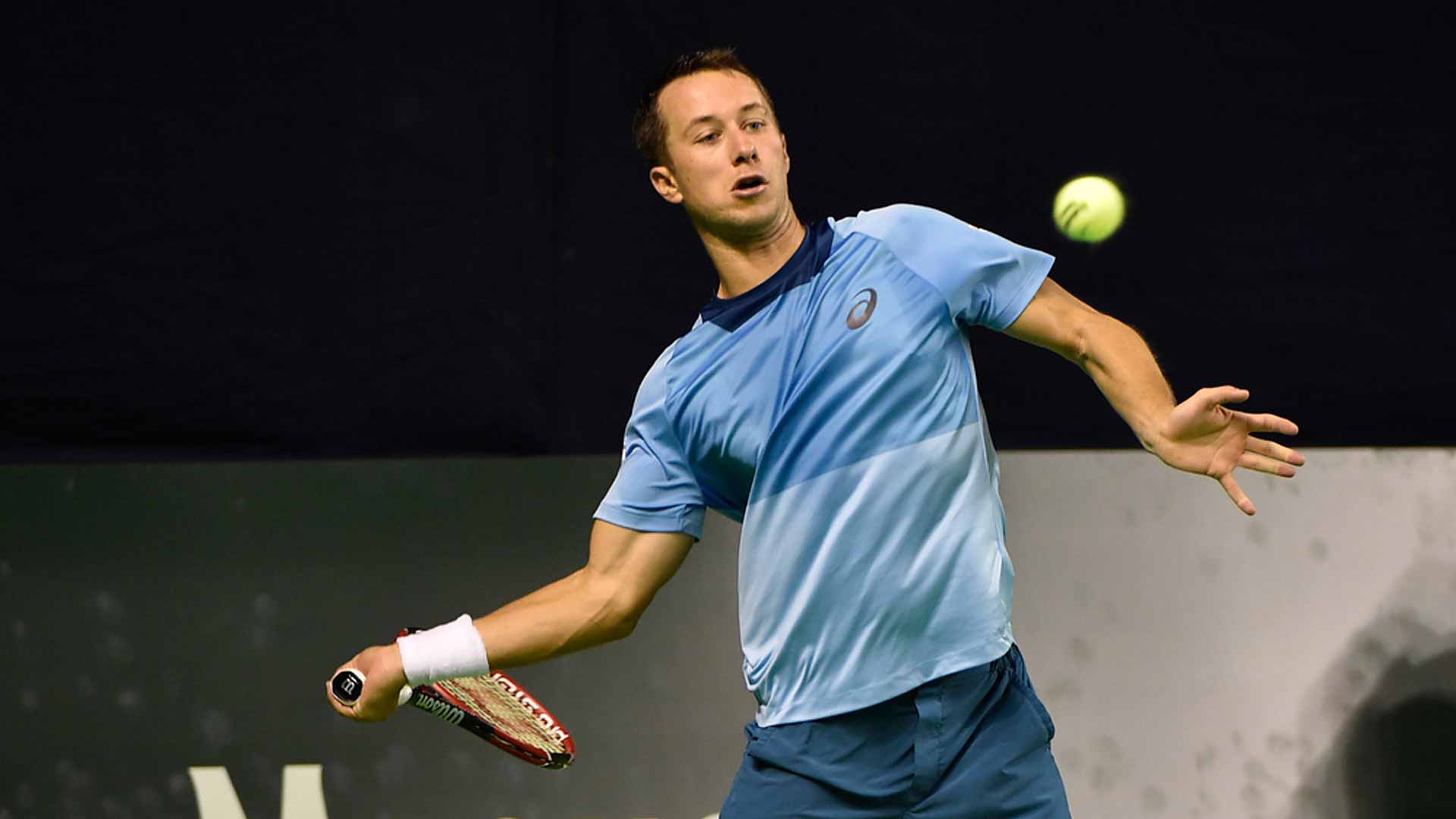Jack Sock notched his eighth win over a Top-15 opponent in his budding career, fighting off third seed Gilles Simon in the If Stockholm Open quarter-finals.
Seventh seed Sock, who was taken the distance in his two previous matches this week, beating Spaniards Pablo Carreno Busta and Fernando Verdasco, sealed the victory 7-5, 7-6(5) in two hours and one minute. The American avenged a loss to Simon on the clay of Rome earlier in the year, firing eight aces and denying 13 of 16 break points faced.
“I’m happy to get through on my third match point and not have to stay out there any longer,” reflected Sock, who rallied from two breaks down in the second set. “I played more aggressive tennis in the middle of the second to get it back. With my style I try to come forward as much as I can and I was able to do that there at the end of the second.”
Sock denied an all-French semi-final, with Richard Gasquet awaiting in the semi-finals. One of six first-time champions on the ATP World Tour this year (Houston), the World No. 32 is on the precipice of breaking into the Top 30 of the Emirates ATP Rankings for the first time.
Gasquet, meanwhile, rallied past countryman Jeremy Chardy 2-6, 6-3, 7-6(4) in two hours and 11 minutes, capitalising on four of five break points. Seeking to become the first French finalist in Stockholm since Gael Monfils hoisted the trophy in 2011, he will hope to avenge a three-set defeat to Sock in Washington. Gasquet remains with an outside chance of qualifying for the Barclays ATP World Tour Finals, currently sitting in the No. 10 spot with 2,535 points in the Emirates ATP Race To London.
“I was a little bit tense, served two double faults,” said Gasquet of his failed attempt to serve out the match at 5-4 in the third set. “It was a little difficult, but I tried to fight and played very good in the tie-break and didn’t make a mistake. It was a good match for me. Jeremy has a very good serve and very good forehand so I need to play my best tennis to win.”
In other action, top seed and defending champion Tomas Berdych halted Grigor Dimitrov‘s upset bid 7-5, 6-4. A rematch of the 2014 Stockholm final, also won by Berdych, the Czech was rock solid on serve, taking 30/35 (86 per cent) of first serve points while stopping both of the Bulgarian’s break chances. He pulled their FedEx ATP Head2Head series level at three wins apiece.
Berdych, who has clinched a spot in the season finale at The O2 for a sixth successive year, further cemented himself among the elite eight in advancing to his ninth ATP World Tour semi-final of the season. He most recently hoisted the trophy at the Shenzhen Open – his first title of 2015. The consistent Czech will square off against Marcos Baghdatis. Baghdatis beat Gilles Muller 7-6(5), 4-6, 6-3.
“My serve was working well today and in the tough moments I was able to help myself a lot with the serve,” said Berdych. “In general, it was a very good match.
“It’s different from last year when I was fighting until the last moments to qualify. I’ve qualified the earliest in my career. I’m very pleased with that. I’ve had a great season so far and I think it’s a good reward for that. But I came here to play good tennis and take the trophy.”


